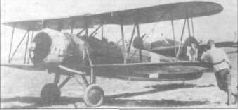4. FLAMMENWERFER- FLAMMENWERFER (FLAMETHROWERS)
Flamethrowers were first used by the German Army during World War I for use against fortified positions and bunkers. In accordance with a proposal received from Peter V. Stahl, a technical specialist of I./KG 51, in February 1940, tests were carried out in Tarniewice of a backward-facing Flamenwerfereinbau flamethrower mounted on He 111, which would "spew" burning oil from specially mounted pipes. The installation was conceived as a defensive weapon against fighter attacks, since it was assumed that the pursuing enemy aircraft would fly into a large, dense, black cloud of smoke created by a flamethrower and absorb it, blinding the pilot or making it difficult to aim.
The tests were carried out with a Bf 109 flying in the role of an attacker, and although the tests proved effective, as a result of which the Messerschmitt's windshield was covered with soot at an altitude of 150 m, the idea officially did not go any further.
Ignoring the lack of interest in his idea, Stahl continued to work and installed a flamethrower on the Ju 88A.1 Wk.Nr 6093 9K + EH - 1./KG 51 in Villaroche, France, in the late spring of 1940. The tank was installed in the rear part of the fuselage, next to the tail wheel, to which two ventilation pipes were attached, and the third pipe was attached to the enlarged wing tip on the left side. When applied, the results were visually impressive, and one day, on August 19, 1940, Stahl may even have contributed to the crash of a Spitfire over the southern coast of England. The specially configured Ju 88 later participated in operations in the Soviet Union in 1941, was attributed to Stab I./KG 51, and was successfully defended at least once with a flamethrower during an attack by Russian fighters.

A Ju 88, possibly A-1 Wk-Nr 6093 9K+EH of 1./KG 51, based at Villaroche in France in the spring of 1940, makes a dramatic low-altitude flyby when the crew activates the Flammenwerfereinbau.

The Ju 88A-4 Wk-Nr 1050 9K + FB from Stab I./KG 51 was equipped with a Flammenwerfereinbau. This can be seen here in January 1942 with the rudder decorated with the signs of the defeat of ships, and during the tests of the flamethrower in Wiener Neustadt, when it was piloted by Hauptmann Heinrich Hahn.

Drawing of the Gero II installation on the Fw 190F.

Gero IIC on FW-190F-8 figure.
In February 1945, Focke-Wulf was asked to prepare the Fw 190F.8 with a specially protected rear fuselage and tail section for the expected Flammenwerfereinbau produced by Arado and Norddeutsche Dornier, but it is believed that such work was not carried out before the end of the war.
Gero IIA and IIB.
The total length is 3120 mm.Diameter 470 mm
The fuel tank capacity is 375 liters.
Empty weight 230 kg. Curb weight 540 kg.
Gero IIC
The total length is 1920 mm. The diameter is 450 mm. The fuel tank capacity is 164 liters. Empty weight 173 kg. Curb weight 300 kg.
Sources of data and images: Caldwell, Donald and Muller, Richard, Luftwaffe over Germany - Defense of the Reich, Greenhill Books. LUFTWAFFE SPECIAL WEAPONS1942–45. ROBERT FORSYTHE.
https://zen.yandex.ru/media/ww39_45/ori ... 519feda543
















